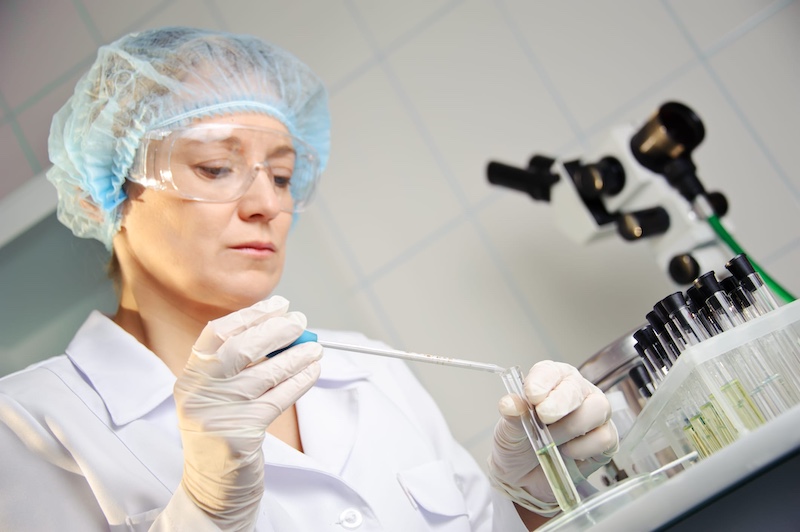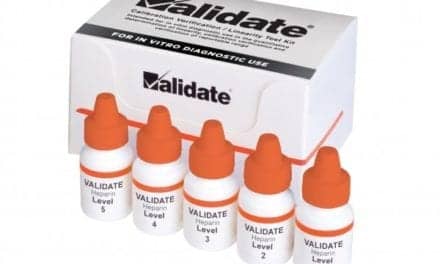The fastest way to expand access is to make the first IVF cycle more successful. AI-driven approaches to improving implantation rates are a first step.
By Hans Gangeskar
Summary:
Innovative IVF techniques are emerging to increase accessibility and improve implantation predictions through non-invasive, AI-driven metabolomics assays, as traditional PGT-A methods face challenges and legal scrutiny.
Takeaways:
- PGT-A Challenges: Current PGT-A methods, used for embryo selection, are under legal and scientific scrutiny due to miscommunication about their purpose and potential discarding of viable embryos.
- Non-Invasive Alternatives: Researchers are exploring non-invasive approaches—such as analyzing spent embryo culture media—to find more accurate predictors of implantation success.
- AI-Driven Metabolomics Promise: The m|z assay employs mass spectrometry and machine learning to achieve an 85% implantation prediction accuracy, potentially revolutionizing embryo selection independent of conventional factors like morphology and euploidy.
In vitro fertilization (IVF) has been generating widespread attention recently, as public consensus continues to emphasize increased accessibility for more families.
But not all of the news has been positive. For one, the standard of care for embryo selection—preimplantation genetic testing for aneuploidy (PGT-A)—is under pressure, with concerns over a failure to fully inform patients of the purpose of the tests, fueling class-action lawsuits against every major PGT-A test maker. The fears, largely caused by the confusion between implantation prediction and aneuploidy prediction, has led to the discarding of viable embryos.
PGT-A Test: An Overview
PGT-A tests cells from an embryo to detect the number of sets of chromosomes. Abnormal chromosome count, or aneuploidy, can cause conditions like Down syndrome, and is also a relevant factor in implantation failure. Given the expense of a full cycle (currently about $20,000), as well as the physical and mental toll, these decisions are critical—especially given the fact that it takes women an average of 2.5 cycles to achieve a healthy birth.
PGT-A largely works as advertised for things like gender selection, but its value has not yet been demonstrated in selecting embryos to implant. Studies have not yet been conclusive, but some have shown that PGT-A has no statistical impact in terms of increasing pregnancy rates in women under the age of 35. Some practitioners think PGT-A can positively impact implantation rates when eggs are retrieved from a woman older than 35 years.
Another concern is the way in which PGT-A testing is performed. It requires a biopsy that removes 3-4% of an embryo’s cells for testing. It’s widely believe that biopsying an embryo can reduce its ability to implant, although more study is required to confirm this. In addition, the process is operator-dependent, leading to wide variability when it comes to implantation rates.
For these multiple reasons, there is a strong desire among IVF practitioners to find a non-invasive alternative to PGT-A that can improve the accuracy of implantation predictions.
Medium Done Well
One intriguing new approach involves testing the spent medium in which embryos are cultured for five days. The concept is focused on material that has been naturally shed by embryos, which could provide clues to cellular contents without requiring invasive testing.
Some still-early efforts are looking to sequencing genetic fragments found in the medium, left behind following the programmed cell death that occurs as the embryo develops. This approach is promising, but may wind up with the same Achilles’ heel as PGT-A. One theory suggests that because the cells are removed from just one part of the embryo, genetic testing results may not be representative of the entire embryo. It’s also possible that some of the abnormal cells that lead to aneuploid-positive tests might not be consequential for an embryo’s development[i].
Our approach at Overture Life relies on metabolomics instead of genomics. As an embryo grows, it releases proteins and other metabolites into its media. Our data suggests it is possible to discern signals of healthy and unhealthy embryo growth with a metabolomic “fingerprint.”
We began developing an assay by first using mass spectrometry to identify and quantify embryo metabolites in spent media collected from IVF clinics. We used statistical modeling and machine learning algorithms, including partial least squares discriminant analysis (PLS-DA), to select the most important metabolites[ii]. Initial validation confirmed that fingerprints based on the concentration of certain metabolites could distinguish between embryos that resulted in successful pregnancies, and those that did not implant[iii].
The m|z IVF Assay
Our researchers recently published the results of a retrospective study validating our metabolomics approach. Embryos with known outcomes from 218 patients were split into discovery and validation cohorts. The former was used to discover 148 implantation biomarkers, which our analytics approach narrowed down to 36 key biomarkers.
We then applied our AI model to create a metabolite pregnancy index (MPI) based on concentrations of the 36 biomarkers in media, winding up with an assay that predicts embryo implantation with 85% accuracy. Importantly, the correlations with implantation were independent of both morphology and euploidy, meaning the MPI can be used to predict even euploid embryos with seemingly normal chromosomes that would never implant[iv].
These findings informed the development of our m|z platform for noninvasive embryo testing. Like its precursors, the m|z assay uses mass spectrometry and machine learning to assess how likely an embryo is to implant. Clinical trials are ongoing for the final assay, and we hope the larger sample results in similar implantation rates. Our U.S. m|z metabolomics testing is performed in our lab in San Antonio, which recently received a Clinical Laboratory Improvement Amendments (CLIA) license.
Reducing Cycles, Increasing Access to IVF
Efforts using automation, AI, and other novel technologies are desperately needed to help modernize and standardize the field.
Much of the access conversation has centered around costs, with a focus on demand. While well-intentioned, most of these plans do nothing to address the bottlenecks that constrain supply. Those include the limited number of already-overburdened embryologists and other IVF clinic staff.
Platforms like m|z are designed to address these pain points without driving more demand that cannot be met. The fastest way to expand access is to make the first IVF cycle more successful. AI-driven approaches to improving implantation rates, like our metabolomics test, are a great start.
Other technologies like automated platforms are expected to contribute as well, addressing steps that include fertilization and egg and embryo vitrification/thawing. Reducing the cost, as well as the physical and emotional impact, of failed IVF cycles will take an all-hands-on-deck approach that integrates a variety of cutting-edge tools to properly support the long-overlooked field.

Hans Gangeskar is CEO of Overture Life. He has spent the last decade in the reproductive health field, including as co-founder and CEO of Nurx.
Featured Image: Bashta | Dreamstime.com
[i] Ducharme J. IVF Patients Say a Test Caused Them to Discard Embryos. Now They’re Suing [Internet]. TIME. Time; 2025 [cited 2025 Apr 3]. Available from: https://time.com/7264271/ivf-pgta-test-lawsuit/
[ii] Cabello-Pinedo S, Abdulla HAN, Seth-Smith ML, Escriba M, Crespo J, Munne S, et al. A NOVEL NON-INVASIVE METABOLOMICS APPROACH TO SCREEN EMBRYOS FOR ANEUPLOIDY. Fertility and Sterility. 2020 Sep;114(3):e5–6.
[iii] Cabello-Pinedo S, Abdulla HAN, Seth-Smith ML, Escriba M, Crespo J, Munne S, et al. A novel non-invasive metabolomics approach to screen embryos for aneuploidy. ASRM October 2021
[iv] Cabello-Pinedo S, Abdulla H, Mas S, Fraire A, Maroto B, Seth-Smith M, et al. Development of a Novel Non-invasive Metabolomics Assay to Predict Implantation Potential of Human Embryos. Reproductive sciences (Thousand Oaks, Calif) [Internet]. 2024 Sep;31(9):2706–17. Available from: https://pubmed.ncbi.nlm.nih.gov/38834841/





